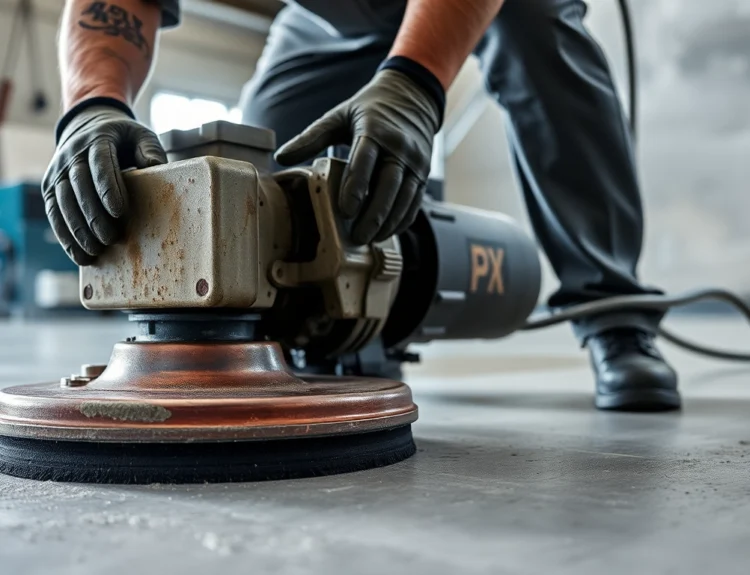Understanding Boom Lift Rental: Types and Applications
In the dynamic world of construction, maintenance, and industrial work, access to elevated work areas is often a critical element determining project efficiency, safety, and success. Boom lifts, also known as cherry pickers or aerial work platforms, have revolutionized how professionals reach complex or high-up locations, providing versatile and safe solutions. The rising demand for flexible, reliable, and environmentally friendly access equipment has led to a significant increase in the popularity of boom lift rentals across the UK. Whether you are undertaking interior refurbishments, outdoor construction, or specialized industrial tasks, understanding the variety of boom lifts available and their applications is essential for making informed decisions.
For a comprehensive range of options tailored to diverse project needs, explore boom lift rental services that are designed to offer the best equipment at competitive prices with a focus on safety and reliability.
Different types of boom lifts available for rent
Boom lifts come in various configurations, each designed to meet specific operational requirements. Selecting the right type depends on factors such as working height, workspace constraints, terrain, and the nature of the task. The primary types of boom lifts include articulating boom lifts, telescopic (straight) boom lifts, electric models, hybrid options, and tracked (spider) boom lifts.
Articulating Boom Lifts
Articulating boom lifts feature jointed arms that can bend, allowing access to difficult-to-reach areas from various angles. These lifts excel in confined spaces or complex environments where maneuverability is paramount. Their versatility makes them ideal for indoor maintenance, building façade work, or bridging obstacles.
Telescopic (Straight) Boom Lifts
The straight boom lifts extend telescopically and provide maximum outreach and height. With a horizontal reach that surpasses articulating models, they are suitable for projects requiring linear access at height, such as outdoor construction or installation work on large structures.
Electric & Hybrid Boom Lifts
As environmental concerns grow, electric and hybrid boom lifts are gaining popularity. Electric lifts produce zero emissions and operate quietly, making them perfect for indoor tasks or noise-sensitive environments. Hybrid models combine electric power with fuel-driven systems to optimize performance and reduce environmental impact.
Tracked (Spider) Boom Lifts
Tracked boom lifts, or spider lifts, are equipped with stability-enhancing tracks that allow operation on uneven or challenging terrains. They are compact and capable of reaching elevated areas in outdoor settings such as construction sites, industrial facilities, and infrastructure projects.
Common uses in construction, maintenance, and industrial work
Boom lifts serve a broad spectrum of applications across various industries, providing safe and efficient access for tasks that range from routine maintenance to complex construction projects:
- Construction: Facilitating the installation of structural components, façade work, roofing, and window fitting, especially on multi-story buildings.
- Building Maintenance: Enabling painters, cleaners, and repair crews to access high or hard-to-reach areas with minimal disruption.
- Industrial Tasks: Supporting equipment installation, electrical wiring, HVAC work, and inspection activities in manufacturing plants, warehouses, or industrial complexes.
- Events and Entertainment: Providing elevated stages, lighting, and rigging support for concerts, theaters, or large-scale events.
- Emergency and Rescue Operations: Assisting fire departments and emergency services in rescue missions or hazard assessments at heights.
Understanding these applications helps in selecting the correct boom lift type, ensuring safety, and optimizing productivity on-site. For specialized projects, consulting with rental providers can offer insights into the most appropriate equipment for specific needs.
Choosing the right boom lift for your project needs
Selecting the perfect boom lift hinges on a thorough assessment of your project’s specific requirements. Here are key considerations:
- Working Height: Determine the maximum height you need to reach, including the scope of the task and any necessary safety margins.
- Work Environment: Indoor spaces demand electric lifts with low emissions and noise. Outdoor projects may require diesel or hybrid models capable of handling uneven terrain.
- Space Constraints: Narrow or confined areas favor compact articulated lifts. Larger, outranking telescopic lifts require sufficient space to operate freely.
- Accessibility & Mobility: Consider how easily the equipment can be transported and set up on the site, factoring in weight limits and site access routes.
- Operational Capacity: Evaluate load capacities and platform size to ensure they support all necessary tools and personnel safely.
- Budget & Cost Efficiency: Balance upfront rental costs with expected project duration and operational efficiency to ensure value for money.
Working closely with a reputable rental provider allows you to discuss these factors in detail, providing tailored recommendations that align with your project’s objectives. Additionally, choosing rental companies with wide equipment variety ensures adaptability as project requirements evolve.
How to Select the Best Boom Lift Rental Service
Key factors: safety, reliability, and equipment variety
The success of any project involving boom lifts fundamentally depends on partnering with rental providers that prioritize safety, reliability, and diversity of their equipment fleet. Essential features include:
- Safety Certifications & Standards: Ensure the provider complies with UK safety regulations, holds relevant certifications, and maintains regular equipment inspections.
- Reliable Equipment & Maintenance: Rent from providers that invest in regular servicing, ensuring machines operate efficiently and reduce downtime.
- Variety of Equipment: Access a broad range of boom lifts suited for different heights, terrains, and applications, facilitating seamless project progression.
Evaluating rental providers: certifications and customer reviews
Thorough evaluation of potential rental partners involves checking industry certifications such as IPAF (International Powered Access Federation) accreditation, which reflects adherence to safety standards. Review customer testimonials, case studies, and online ratings to gauge reputation and service quality. A transparent provider will offer detailed information on their maintenance regimes and safety protocols.
Cost considerations and getting the best value for your budget
Rental costs vary based on equipment type, duration, delivery, and operational support. It is crucial to obtain comprehensive quotes that include all charges to prevent unexpected expenses. Comparing rates between providers, while considering their safety records and equipment range, ensures optimal value. Long-term rentals often benefit from discounted rates and maintenance packages, further maximizing return on investment.
Step-by-Step Guide to Renting a Boom Lift
Assessing your project’s height and workspace requirements
Begin by precisely defining the maximum height needed, including allowances for operator height and task-specific lift requirements. Map out the workspace, noting any obstacles, access points, and ground conditions. This assessment guides your choice of lift type, outriggers, and stability features.
Booking and delivery process explained
Contact a trusted rental provider well in advance, providing detailed project specifications. Confirm delivery times, setup requirements, and operator availability if needed. Ensure the equipment arrives in good condition, with clear instructions on operation and safety precautions. Many providers offer flexible rental durations and quick turnaround times, accommodating project changes.
Post-rental tips: safe operation and maintenance
After use, ensure operators perform routine checks before and after each shift. Store the equipment properly and notify the rental company of any damages. Proper maintenance extends the lifespan of the machinery and maintains safety standards for future use.
Optimizing Usage for Safety and Efficiency
Best practices for operator training and safety protocols
Operator training is paramount. All operators should hold valid IPAF certification and receive site-specific safety briefings. Emphasize the importance of harness use, stability procedures, and emergency protocols. Regular refresher training fosters a safety-conscious culture and minimizes risks.
Maximizing productivity with the right equipment setup
Ensure the boom lift is set up on stable ground with outriggers deployed if necessary. Verify that tools and materials are securely stored within reach. Plan work sequences to minimize repositioning and downtime, thus enhancing efficiency.
Performance metrics and how to evaluate rental success
Track key indicators such as uptime, safety incidents, and task completion times. Feedback from operators can identify areas for improvement. Regular evaluations ensure the rental equipment continues to meet project demands without compromising safety or quality.
Innovations and Future Trends in Boom Lift Rentals
Latest technological advancements in boom lift design
Emerging designs incorporate features like enhanced maneuverability, dual-platform systems, and smart controls that improve precision and operator comfort. Telemetric monitoring systems allow real-time diagnostics, reducing downtime and maintenance costs.
Eco-friendly and hybrid options gaining popularity
Sustainability is a growing priority. Hybrid and electric boom lifts reduce carbon footprints, lower operating costs, and align with increasing regulatory standards. Innovations include solar-powered systems and energy-efficient batteries.
How rental companies are enhancing sustainability and safety
Leading providers implement rigorous safety protocols, advanced training, and incorporate environmentally friendly technologies. Investment in safer, cleaner equipment ensures compliance with UK safety regulations and promotes corporate responsibility.



